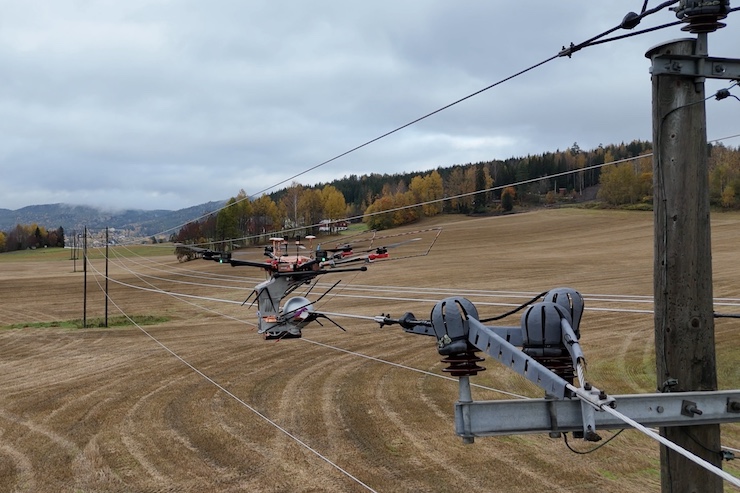
© HeimdallPower.com
A per capita analysis revealed that the annual energy costs per person in the United States were nearly $4,000. In response to the growing demand for energy consumption and the exorbitant prices required to meet these demands, the Federal Energy Regulatory Commission (FERC) enacted a rule called the 881 mandate. This requires energy providers must use ambient-adjusted ratings on transmission lines. “If we are going to meet the needs of the grid of the future while keeping customer rates just and reasonable and maintaining grid reliability,” said FERC Chairman Richard Glick, “we need to squeeze everything out of our existing grid.”
To optimize the existing power grids, detailed data on transmission lines needs to be collected. In 2016, Barge Johansen founded Heimdall Power Inc. to monitor power grid health in a reliable, sustainable, and cost-effective way. The company developed specialized Neuron sensors, also called “Magic Balls,” which are installed on transmission lines. The spheres are robust enough to withstand environmental elements while collecting real-time, continuous data directly from active power lines. The accompanying software relays this data through secure networks, allowing power companies to employ ambient-adjusted ratings. While Heimdall is based out of Oslo, Norway, they have clients worldwide, with the United States being their largest client.
The company’s U.S. headquarters is in Charlotte, NC, where they have been coordinating the installation of Magic Balls to meet the needs of FERC’s 881 mandate. However, to safely and efficiently install the Neurons, Heimdall had to develop a system that would not cause power disruptions or incur excessive costs. This led to the development of a novel drone system to install complete networks of Neuron sensors on active power lines. Not only can the drone install the Neurons on active power lines, but it can also access areas that are difficult and dangerous for people to reach, getting the job done in a matter of minutes.
Heimdall’s drone is specially designed to safely maneuver around power lines. It has sensors and protective fins to ensure its safety. The Neuron sensor has a hinge on one side, allowing it to open and close. An open sensor is placed on a tray below the drone. The drone autonomously flies to a pre-programmed location along the power line. It then aligns the open sphere on the line. Once in place, a sensor triggers the sphere to close, locking it onto the power line. When the Neuron is secured, the drone autonomously returns to its landing pad.
Heimdall’s first drone partnership with a U.S. energy company took place on April 30, 2024. In a press release about the event, Heimdall stated, “To kick off our groundbreaking Dynamic Line Rating project with Great River Energy, the largest Dynamic Line Rating project in the U.S. to date, the first sensor of the project was installed this week by our unique Autonomous Drone System on a live 115kV line located near the headquarters of Great River Energy in Maple Grove, MN.” The drone installed the Neuron in less than 2 minutes before moving on to a second installation, all without compromising a moment of service to Great River Energy’s 1.7 million customers.
Manually installing the Neuron sensors would have required shutting off power to customers, putting installers at risk, and costing the power company more money. Heimdall has continued to perfect its Autonomous Drone System with the installation of Neuron sensors throughout the United States and Europe. Recently, the company announced that it had further improved the drone system. “Maintaining the fully autonomous flight mode from previous versions, this new drone tool is not only reducing the time spent on the power line by 90%,” Heimdall stated, “but we’ve also improved both the stability and reliability of the system, further strengthening the position for drone installation as utilities’ preferred sensor-installation method worldwide.”
With the new system, once the drone is airborne, installation is completed within 10 seconds, dramatically reducing the previous 2-minute time. Ultimately, using drones to install these sensors benefits everyday people. By enabling the efficient and safe collection of real-time data on transmission lines, Heimdall not only supports the goals of FERC’s 881 mandate but also helps power companies reduce costs and enhance grid reliability. This, in turn, allows power companies to implement ambient-adjusted ratings, which directly contribute to lower annual costs for customers.
|